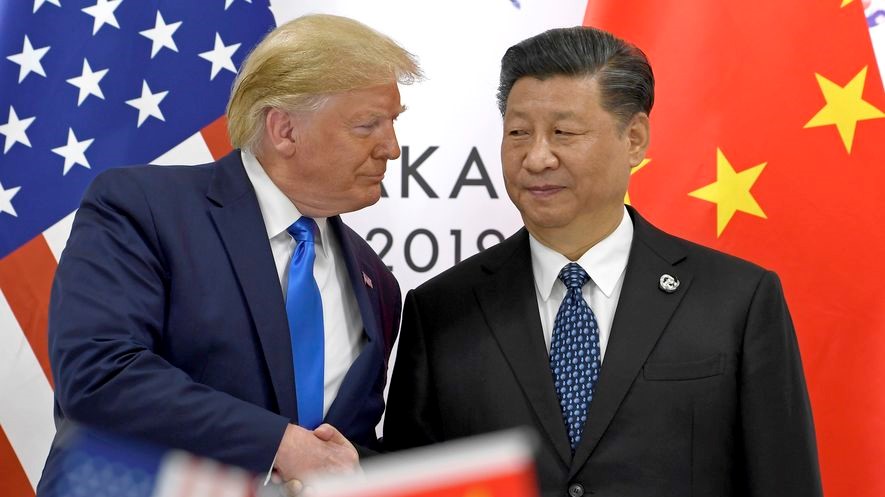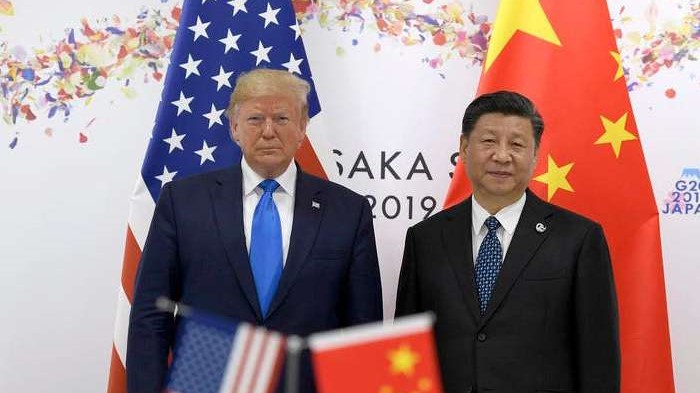Published 11 July 2019 | 4 minute read
Trade war truces, like honeymoons, are usually short. Accordingly, we see the goodwill reported between Presidents Trump and Xi in Osaka as short-lived.
Both sides made vague commitments, based on flawed assumptions about what the other side was thinking, and we expect this to be the eventual undoing of the current cease-fire.
An underappreciated rationale for a truce – even a temporary one – is that both presidents needed to take a break to focus on pressing domestic issues. President Xi needs to focus on preparations for the 70th anniversary of the People’s Republic in October, and on an upcoming reshuffle of provincial officials. President Trump needs to prepare for the launch of his reelection campaign, which requires time for him to calibrate pressure on China with the domestic macro outlook in the US that is his ticket to a second term. Combined, these priorities set the stage for limited reengagement while Trump remains focused mainly on deficit reduction and pure trade issues. Negotiations over more contentious structural issues will thus linger.
This creates potential for the appearance of reengagement to unravel once it becomes clear to both delegations that the starting line for new talks has shifted backwards, not forwards. Neither side has strong incentives for a quick settlement and might instead pursue a cease fire. Our view, however, is that half-hearted talks cannot contain external risks and provide an adequate buffer for addressing domestic issues.
A reluctant handshake
Both Presidents Xi and Trump knew that major breakthroughs in Osaka were unlikely but had a shared interest in returning to negotiations. On the Chinese side, President Xi faces a slowing economy emerging from domestic financial instability. A temporary truce in the trade war gives him more time to use the upcoming Politburo mid-year meeting on the economy and Beidaihe leadership retreat to coordinate policies and steady the economy ahead of the October anniversary. To maximize political leverage, President Xi needs to lobby support across the political spectrum within the Party. To this end, a temporary truce with the US and vague commitments helps him keep out of the domestic political crossfire.
Similarly, we think President Trump wanted a break from trade tensions with China (despite having instigated them) to manage setbacks with Iran sanctions and to pursue a diplomatic breakthrough with North Korea that would play well on the campaign trail. Behind the scenes China is intimately involved in both situations and these are areas where Xi can be helpful to Trump. Additionally, even one-off Chinese purchases of agricultural goods could be sold as a deliverable to American farmers and help ease some domestic capital market anxiety in the US.
As a result, when both sides convened in Osaka, we saw the potential for each to deliver on at least some of the other’s specific demands. Xi asked for the lifting of sanctions on Huawei and Chinese scholars in the US, as well as suspension of arms sales to Taiwan. Trump requested that China resume purchases of US soybeans and play a constructive role in restarting the dialogue between Washington and Pyongyang.
Some to give, but less to gain
Although limited demands from both sides cleared the way for a resumption of negotiations, they left out more contentious structural issues that imperiled previous talks. It is also important to note that the Osaka handshake agreement was only an agreement to resume talks, nothing more. With this in mind, the fundamental gap between the two sides remains as wide at the end of the Osaka G20 as it was in May. When talks reconvene, both sides will walk into the room with different assumptions about where the starting line actually lies.
The Chinese side presumes that Trump’s endorsement for renewed trade talks must mean he is ready to make concessions on core demands. These include the removal of all tariffs, realistic purchases of US commodities, and a more balanced text in the trade deal. However, we think the US presumes that because Xi agreed to extend the talks, he must understand that the US will maintain existing tariffs as leverage and will only agree to temporarily suspend additional tariffs to see what additional concessions the US could extract from China. In other words, the Chinese delegation will enter the room thinking the starting line has shifted, whereas the US delegates will assume China will return to the previous stance before the talks collapsed in May. Negotiators from both sides will feel as if they are starting over, and this will inevitably create more mistrust and frustration.
Downgraded talks
The only positive signal from the G20, in our view, is that both sides seem to agree tacitly that the scope of previous negotiations was too ambitious. During trade talks last year, the Chinese side was anticipating a reset to the US-China strategic relationship, including a change to the US’s demands for a comprehensive Chinese domestic reform package. Similarly, the US believed that the trade talks would lead to fundamental changes to China’s economic management practices, including industrial policies. Such illusions have been dispelled, and both sides seem to agree that for the time being negotiations should be confined to trade issues, such as one-time deficit reductions and a suspension of additional tariffs.
However, the risk is that the conditions behind the Trump-Xi handshake were too vague. For example, Trump promised to lift an embargo on sales to Huawei but it lacked specifics. It is also likely that Trump will proceed with pending arms sales to Taiwan. Moreover, Trump has also questioned Beijing’s exchange rate policy. This ambiguity and potential appearance of betraying commitments made to Xi at the G20 could well undercut the next round of talks before they begin. If the Trump-Xi meeting in Osaka was about confidence building, we think Trump’s post G20 activities have already eroded Beijing’s confidence in him.
What can go right/wrong
As trade talks resume, we think the US side will set a deadline of no longer than 3 months for another round of tariffs on the remaining untaxed balance of US imports from China to kick in. Only under two scenarios might a more prolonged truce materialize: China helps the US get a denuclearization deal from North Korea, or China delivers Trump a huge headline number for purchasing US goods to boost his reelection campaign. The cost for the US would likely come in the form of reduced domestic structural reform commitments from China. This might be a hard sell for Trump’s core constituency but is not entirely impossible.
However, if the US Federal Reserve cuts rates twice before October, or if the White House sees dimming prospects of a deal with Pyongyang, we think Trump will not hesitate to walk away from negotiations and ratchet up tariffs. In either case, we see limited chance of success for even a partial deal on trade within the next three months because the Osaka handshake between Xi and Trump won’t be enough to overcome mistrust and faulty assumptions.
Read our other expert papers about what happens next after Osaka.
© The Hinrich Foundation. See our website Terms and conditions for our copyright and reprint policy. All statements of fact and the views, conclusions and recommendations expressed in this publication are the sole responsibility of the author(s).



